Salmonberry (Rubus Spectabilis)
Salmonberry is a flowering shrub belonging to the Rosaceae or rose family. It bears small edible fruits that have a sweet taste. This North American plant is widely cultivated both for its fruits and flowers.
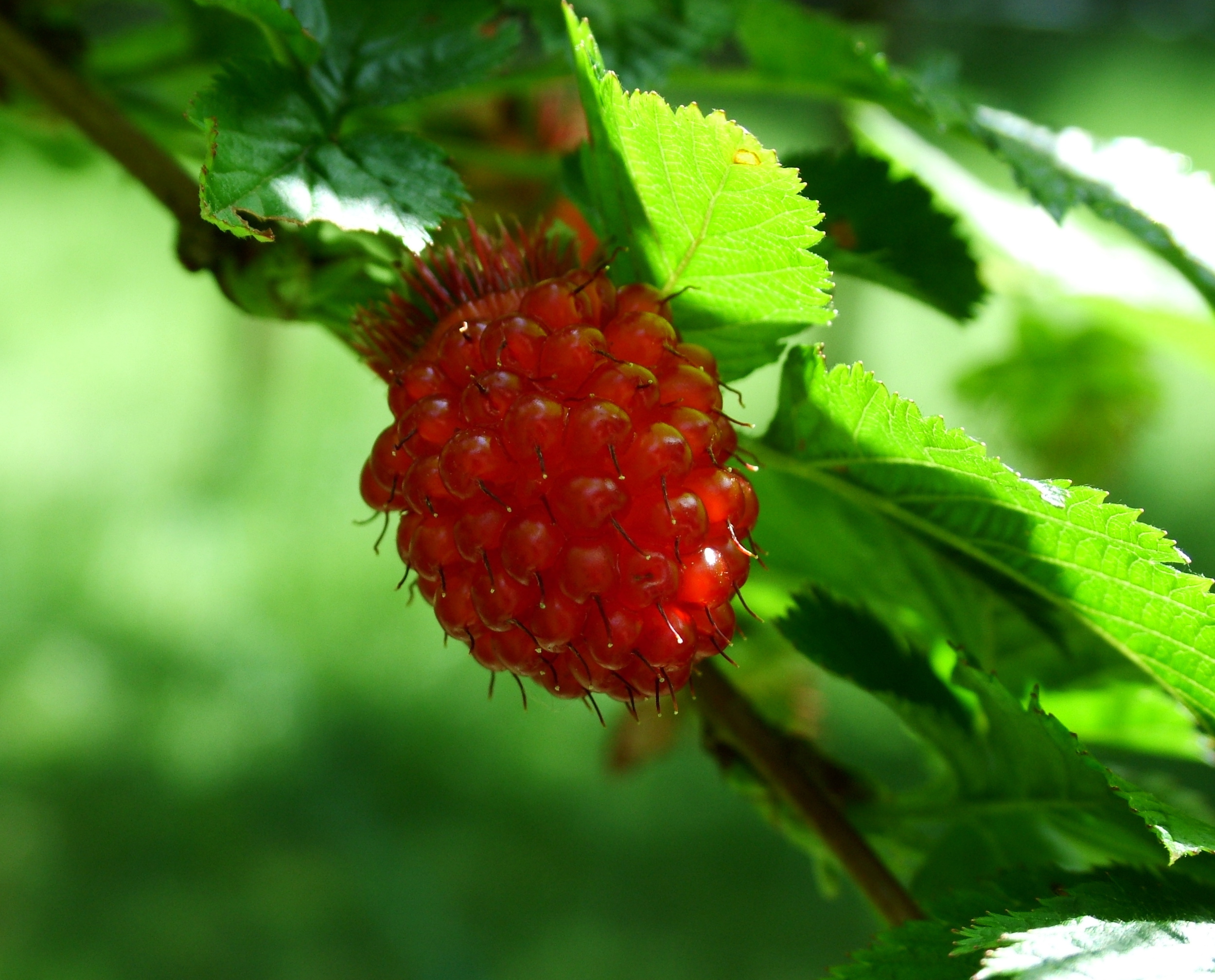
Salmonberry (Rubus Spectabilis)
Table Of Content
Salmonberry Scientific Name
The scientific name for this plant is Rubus spectabilis.
Salmonberry Description
The fruits of these shrubs are a close relative of raspberries. Here is a general description of the fruits:
Size: The fruits consist of numerous drupelets tightly bundled around a single central receptacle. Each fruit grows 1.5 cm to 2 cm long.
Color: Their color varies from yellow to reddish orange.
Shape: These ovoid or globose fruits resemble large raspberries.
Taste and Flavor: Their taste ranges from sweet to slightly sour. They have a delectable aroma when ripe.
Salmonberry Plant
The plants of this species are highly valued for their attractive appearance. They grow 1 meter to 4 meters in height. Their trifoliate leaves grow between 7 cm and 22 cm in length. Each leaf generally consists of three leaflets with the terminal leaflet being larger than the other two. These leaves have serrated margin. The purple flowers grow 2 cm to 3 cm in diameter and have five petals.
Salmonberry Distribution
Salmonberries are indigenous to the western coasts of North America. Their distribution range extends from west central regions of Alaska to California. They have been naturalized in various northwest European regions including Great Britain, Faroe Islands and Ireland.
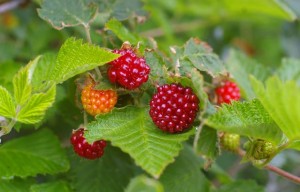
Picture 2 – Salmonberry Picture
How to Grow Salmonberry
They can be grown from seeds as well as from rhizomes, root cuttings, basal sprouting, and hardwood cuttings.
Salmonberry plants can grow in various types of soils including neutral, basic, acidic and organic soils. They prefer moist soil with the pH level ranging between 5.7 and 7.2. The plants can grow both in full and partial sunlight.
The seeds need to be planted in moist soil during fall. Seeds sown in spring require warm stratification of 20°C to 30 °C followed by 90 days of cold stratification at 2°C to 5°C. Young plants need to be watered at least once every 2 to 3 weeks on the first summer during their growth. Applying a slow released and balanced fertilizer can be beneficial for the plants. One should prune these plants in late winter and early spring to keep them in the desired size and shape.
The plants flower from early spring to early summer while their fruits ripen between late summer and early autumn. These fruits are harvested after they are properly matured. They are generally handpicked from the bushes.
Salmonberry Health Benefits
Many health benefits can be derived from the Salmonberries:
- These berries are completely cholesterol free.
- They do not contain any saturated fats.
- Their high manganese contents make them beneficial for humans.
- The fruits are also a rich source of the vitamins C and K.
- The leaves and roots of these shrubs have astringent properties.
- Their root bark is astringent, analgesic, stomachic and disinfectant.
Salmonberry Nutritional Facts
Here is the nutritional fact for each ounce (28 gram) of this fruit:
| Nutrient | Amount |
| Calories | 13.2 (55.3 kJ) |
| Protein | 0.2 g |
| Total Carbohydrate | 2.8 g |
| -Dietary Fiber | 0.5 g |
| -Starch | 0.0 g |
| -Sugars | 1.0 g |
| Total Fat | 0.1 g |
| Vitamin A | 139 IU |
| Vitamin C | 2.6 mg |
| Vitamin E (Alpha Tocopherol) | 0.5 mg |
| Vitamin K | 4.1 mcg |
| Thiamin | 0.0 mg |
| Riboflavin | 0.0 mg |
| Niacin | 0.1 mg |
| Vitamin B6 | 0.0 mg |
| Folate | 4.8 mcg |
| Pantothenic Acid | 0.0 mg |
| Calcium | 3.6 mg |
| Iron | 0.1 mg |
| Magnesium | 4.2 mg |
| Phosphorus | 7.6 mg |
| Potassium | 30.8 mg |
| Sodium | 3.9 mg |
| Zinc | 0.1 mg |
| Copper | 0.0 mg |
| Manganese | 0.3 mg |
Salmonberry Uses
The berries are considered to have an insipid taste by some people. But depending on the place they grow in, properly ripe berries have a delicious taste and are used for various purposes:
Edible Uses
- The sweet berries can be eaten raw.
- They are often used for flavoring candies.
- Jams and jellies are made from the Salmonberry following simple recipes.
- They are also used for making wine and other alcoholic beverages.
- Young shoots of these plants are eaten both raw and cooked like asparagus.
- The sprouts can be cooked with salmon or many other fishes.
- Their leaves are sometimes used as substitute for tea.
Medicinal Uses
- A poultice made from their leaves is used for dressing burns.
- Decoction of the roots is used for treating various stomach complaints.
- The decoction is also useful for lessening labor pain.
- The bark of these plants is powdered to be used for treating burns and soars.
- Poultice made from the bark is applied to ease tooth ache and to cure open wounds.
Other Uses
- The fruits are sometimes used for obtaining a bluish or purple dye.
- The plants of this species are often grown as ornamental plants.
Using Salmonberry during Pregnancy
It is advisable to avoid consuming these fruits in any form during pregnancy as it may cause some complications.
How to Store Salmonberry
It is not possible to store this fruit for more than 1 to 2 days under refrigeration. It should be washed just before use otherwise the fruit may become too squashy.
Salmonberry Recipes
Here are the names of some popular recipes using this fruit:
- Salmonberry Pie
- Salmonberry cake
- Salmonberry Jam
- Salmonberry Crunch
Salmonberry Side Effects
There are no known side effects of these fruits. But, over consumption may result in some adverse effects. They may also cause allergic reactions to some people.
Salmonberry Availability
Fresh fruits are occasionally sold in shops. Salmonberry jam is available online with its price ranging from $5 to $6.
Salmonberry Interesting Facts
Here are some interesting facts about this fruit and its plant:
- This edible fruit was a very important food source for the native people of North America.
- Despite its name, Salmonberry is not a true berry.
- There are approximately 315,250 seeds in each kilogram of this fruit.
- Its seeds can be stored for several years at 5 °C temperature.
- The name “Salmonberry” is believed to have derived from the fact that Native Americans traditionally ate this berry with salmon and salmon roe.
Salmonberry Pictures
Here are some images of these berries and its shrubs.
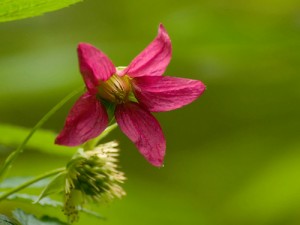 Picture 5 – Salmonberry Flower
Picture 5 – Salmonberry Flower
References:
https://www.fs.usda.gov/wildflowers/plant-of-the-week/rubus_spectabilis.shtml
http://depts.washington.edu/propplnt/Plants/rspectabilis.htm
http://www.naturalmedicinalherbs.net/herbs/r/rubus-spectabilis=salmonberry.php
- by Deepamala Bhattacharya
- February 13th 2012

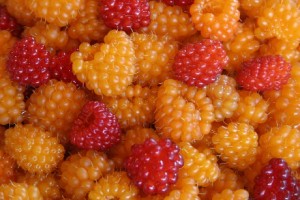
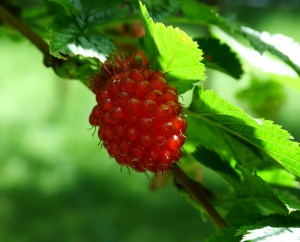
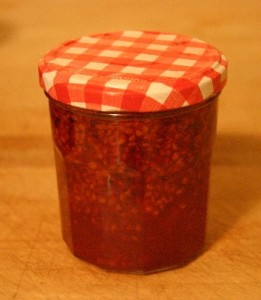
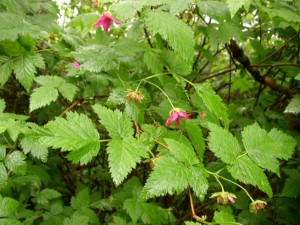
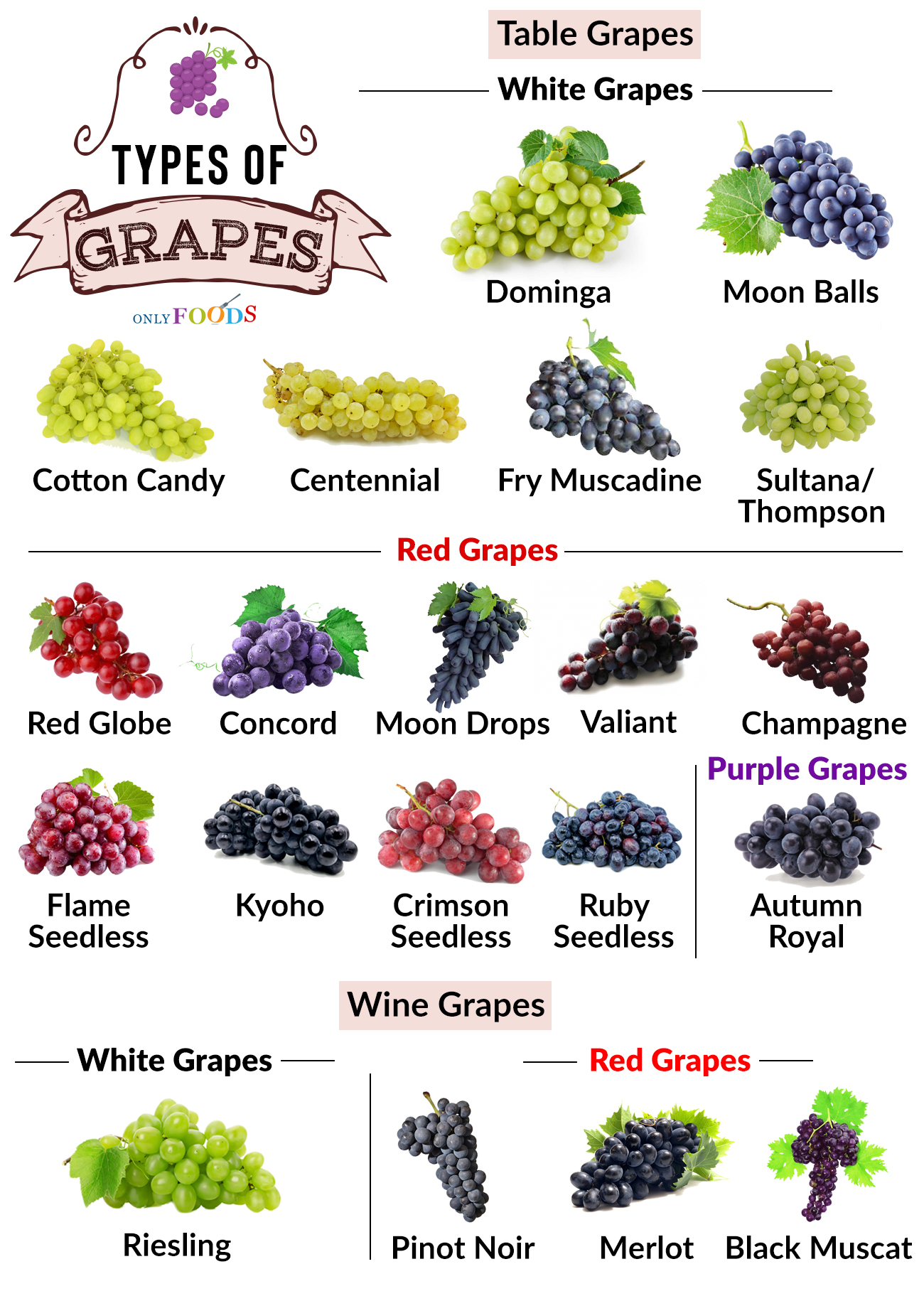
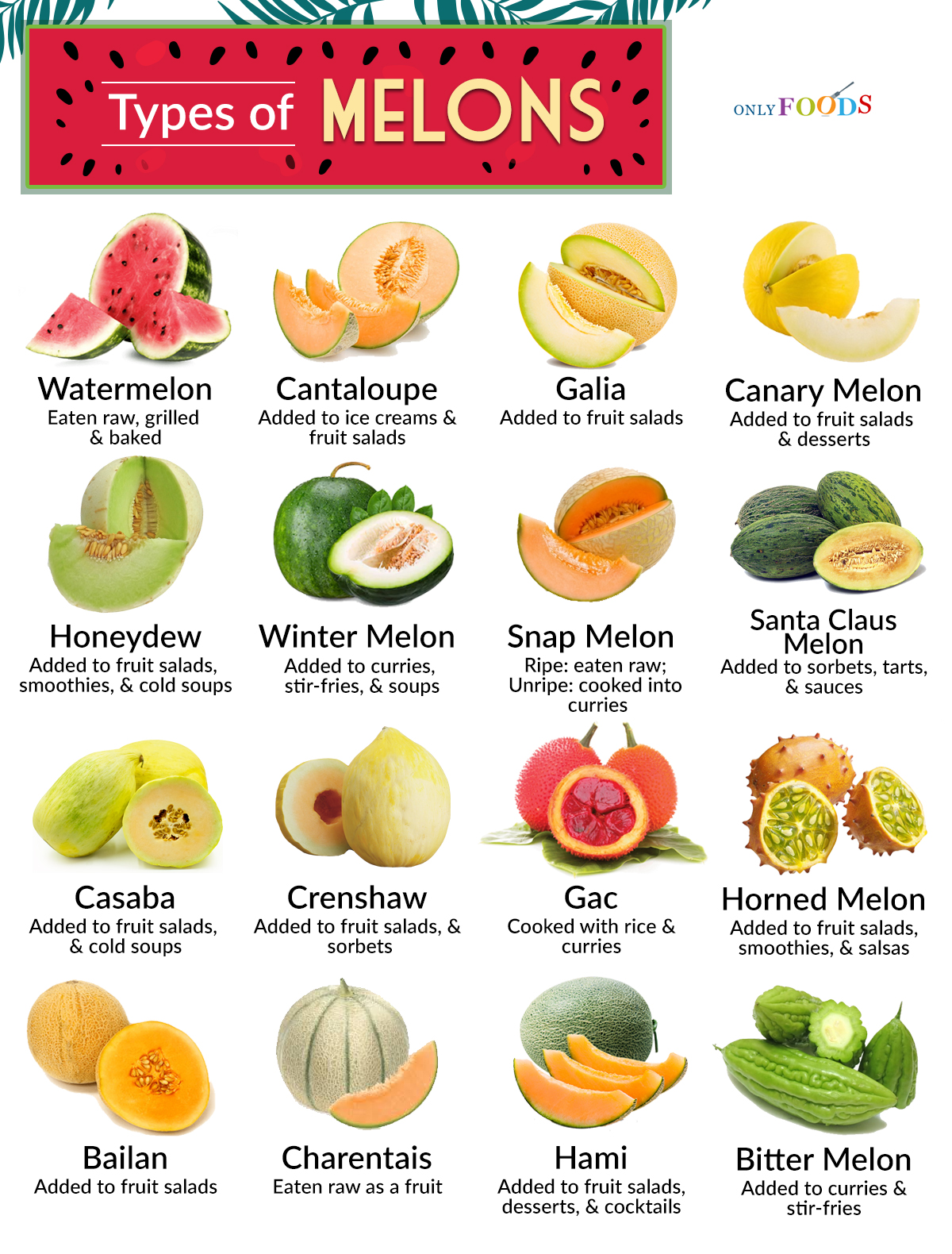
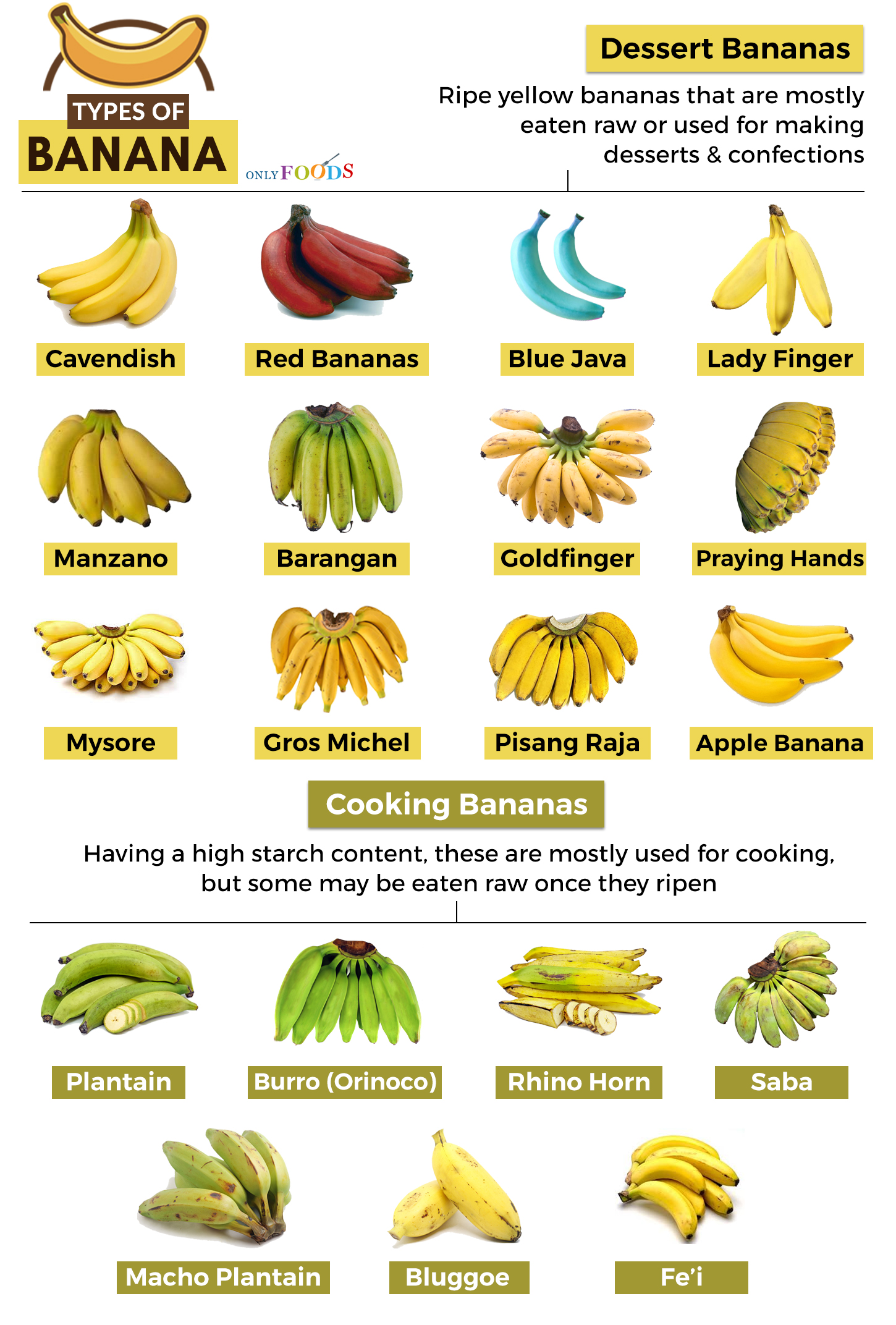
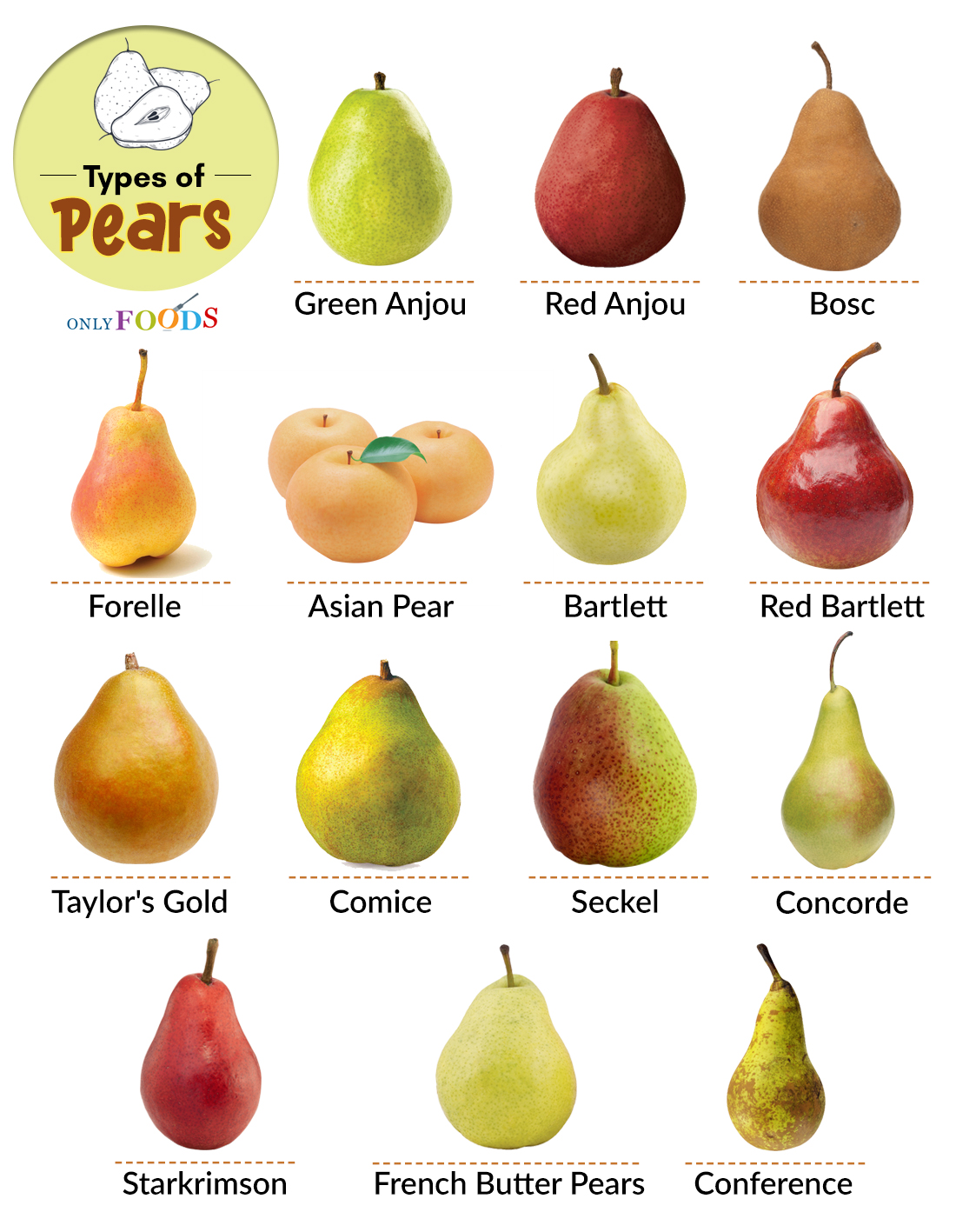

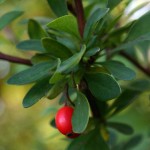
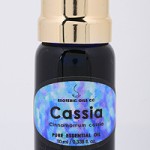
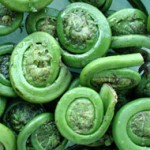
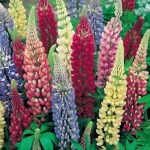
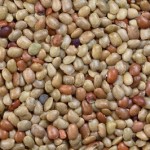
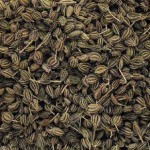

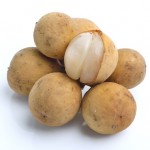
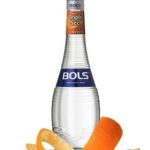
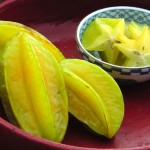
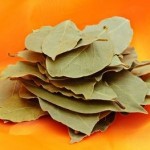
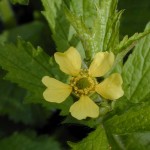
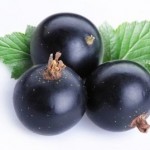
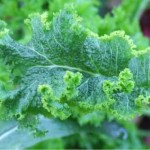
Leave a Reply